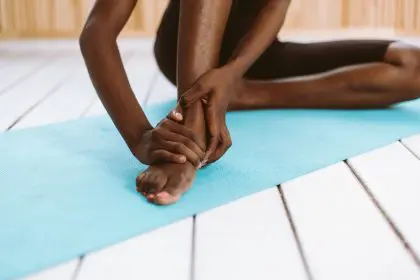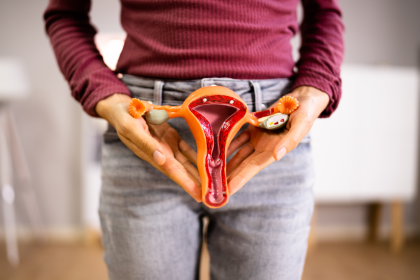Anxiety is a growing issue in modern society, with millions of people turning to medication for relief. While pills are often prescribed as a quick fix, exercise has proven to be a powerful, natural alternative that not only soothes anxiety but also strengthens the body and mind. When you look closely at the science and the emotional transformation that physical activity offers, it becomes clear that working out can calm anxiety better than pills for many people.
Why exercise targets anxiety at the root
When you engage in physical activity, your body releases a surge of endorphins — commonly known as the “feel-good” hormones. These natural chemicals interact with the brain’s receptors to reduce the perception of pain and boost mood. Unlike medications that mask the symptoms, exercise addresses anxiety by balancing hormones, improving brain function and reducing stress levels.
More importantly, workouts lower cortisol levels, the body’s primary stress hormone. Elevated cortisol contributes to panic, racing thoughts and physical discomfort. Regular exercise helps regulate this hormone, providing a long-lasting sense of calm.
Physical movement and emotional control
One of the most overlooked benefits of exercise is its ability to return a sense of control to individuals suffering from anxiety. Movement gives the mind a break from overthinking and worry. Whether it’s lifting weights, going for a brisk walk or taking a dance class, exercise forces your attention into the present moment.
In this way, working out becomes a form of moving meditation. It creates rhythm, repetition and a predictable environment — elements that help anxious minds feel grounded. Unlike medications that may come with side effects like drowsiness, weight gain or emotional numbness, exercise empowers people to face their fears and reshape how they view themselves.
Exercise versus pills for long-term relief
Medications like SSRIs and benzodiazepines are often effective for short-term relief, especially during acute anxiety attacks. However, they do not cure the underlying problem. People may become dependent on these medications, facing withdrawal symptoms or needing increasing doses over time.
By contrast, research shows that just 30 minutes of moderate-intensity exercise three to five times a week can significantly reduce anxiety symptoms. The impact is not only physiological but also psychological. Individuals who commit to a fitness routine often report increased self-esteem, sharper focus and improved sleep — all of which are critical in managing anxiety.
Moreover, while medications require prescriptions, doctor visits and potential refills, exercise is accessible. It doesn’t cost anything to start walking around your neighborhood or to do push-ups in your living room.
How different workouts target anxiety
Not every workout impacts anxiety the same way. Here’s how different types of exercise can help:
Cardio (running, cycling, swimming): Improves heart rate variability and floods the brain with endorphins, making it ideal for immediate relief.
Strength training: Builds both mental and physical resilience. Studies suggest that lifting weights can reduce symptoms of generalized anxiety disorder.
Yoga and Pilates: These focus on breath, balance and body awareness, which slow down racing thoughts and calm the nervous system.
Team sports or group classes: Add a social element that decreases feelings of isolation — a major contributor to anxiety.
These varying options allow people to find a form of exercise they enjoy and will stick with, which is critical to experiencing long-term relief.
A holistic approach the body understands
When people commit to movement as part of their daily routine, they begin to notice other areas of their life improving too. They sleep better, eat more mindfully and develop more stable moods. The ripple effect of this lifestyle change is something medication alone cannot replicate.
Furthermore, exercise allows people to develop coping strategies. It’s a tool that can be used any time — before a big meeting, after an argument or when life feels overwhelming. The empowerment that comes from being able to self-regulate is life-changing for those who have long struggled with anxiety.
Evidence and real-world results
Studies have compared the effects of exercise and medication on anxiety. In many cases, participants who followed a structured exercise plan experienced the same — if not better — relief from anxiety as those who were on prescription medication. Research by Duke University found that exercise was as effective as antidepressants in reducing symptoms of major depressive disorder.
Real people tell powerful stories too. From individuals who wean off medications after finding solace in early morning runs, to those who regain their confidence through boxing, these stories show the deeply emotional and transformational effects of physical movement.
Choosing strength and self-care
While there’s no one-size-fits-all solution to managing anxiety, it’s clear that working out offers more than just physical benefits. It taps into the core of emotional healing. Pills may temporarily numb anxiety, but exercise reshapes how the brain responds to stress.
Choosing movement as medicine can feel difficult at first, especially during moments of high anxiety. But over time, it builds a stronger, more confident version of you — one that’s ready to face the world without fear.
The choice between pills and working out isn’t always either-or. But giving your body the chance to heal itself through motion can spark a level of resilience that no bottle of pills can match. And that’s a victory worth fighting for.











